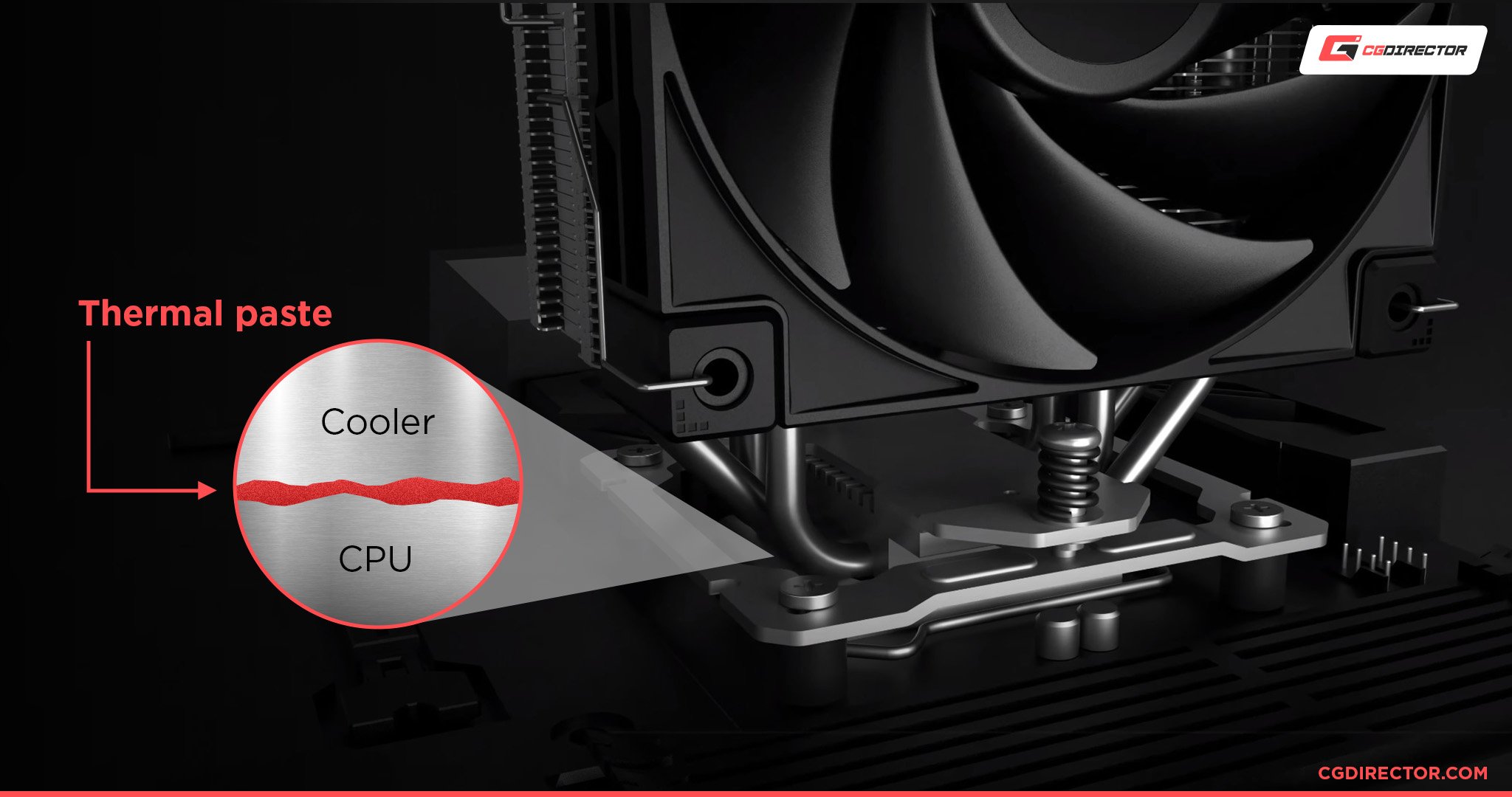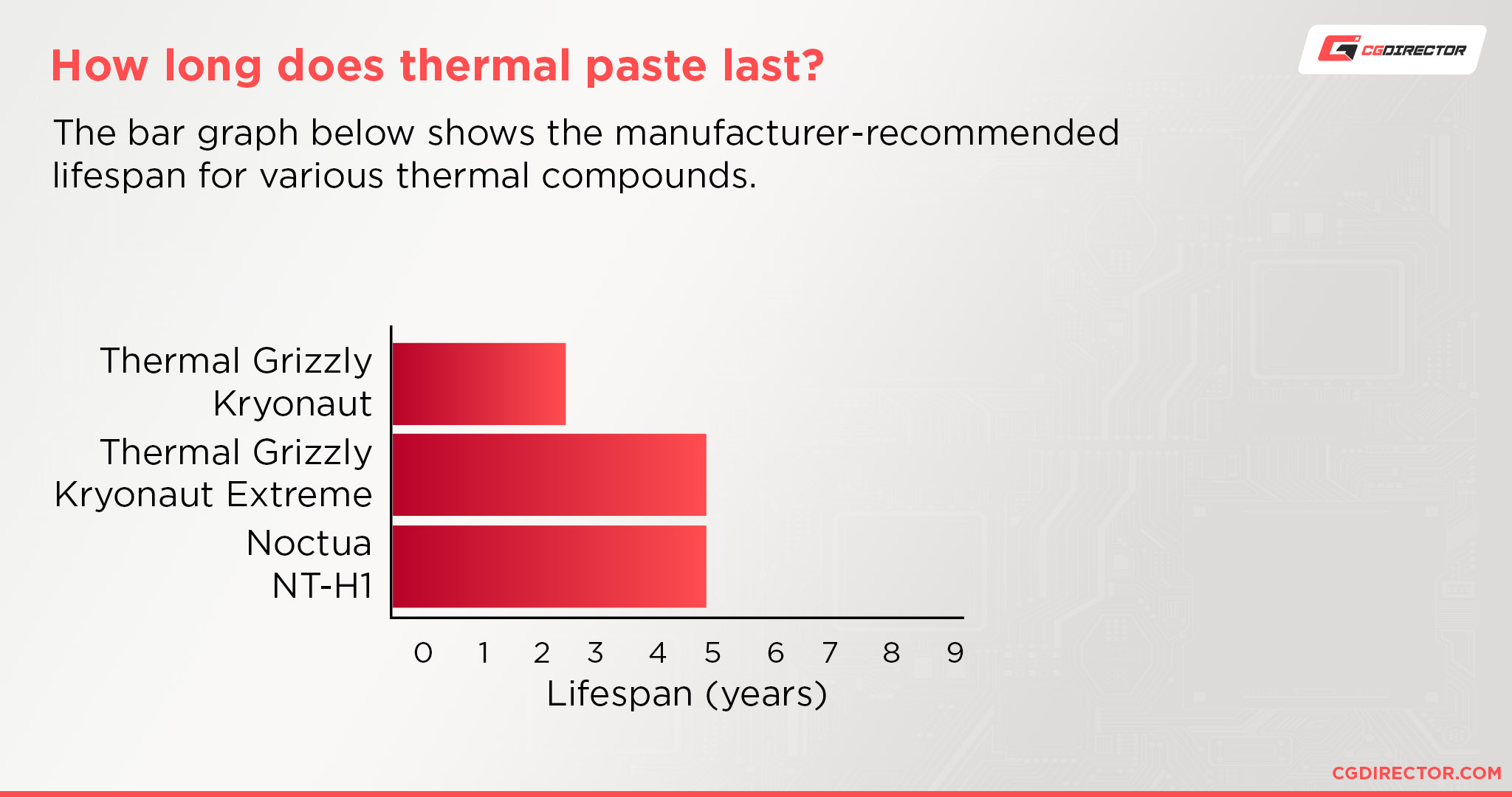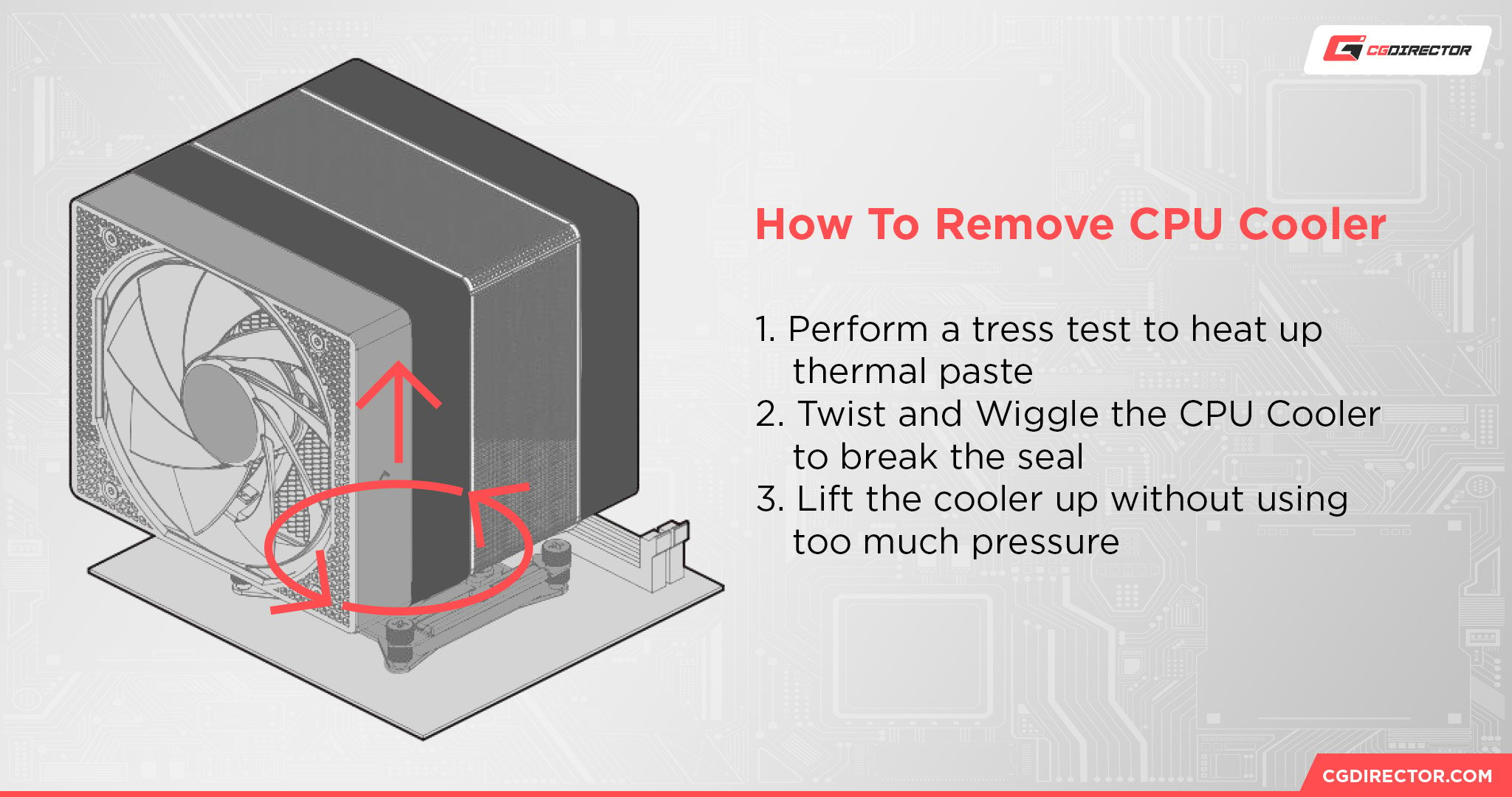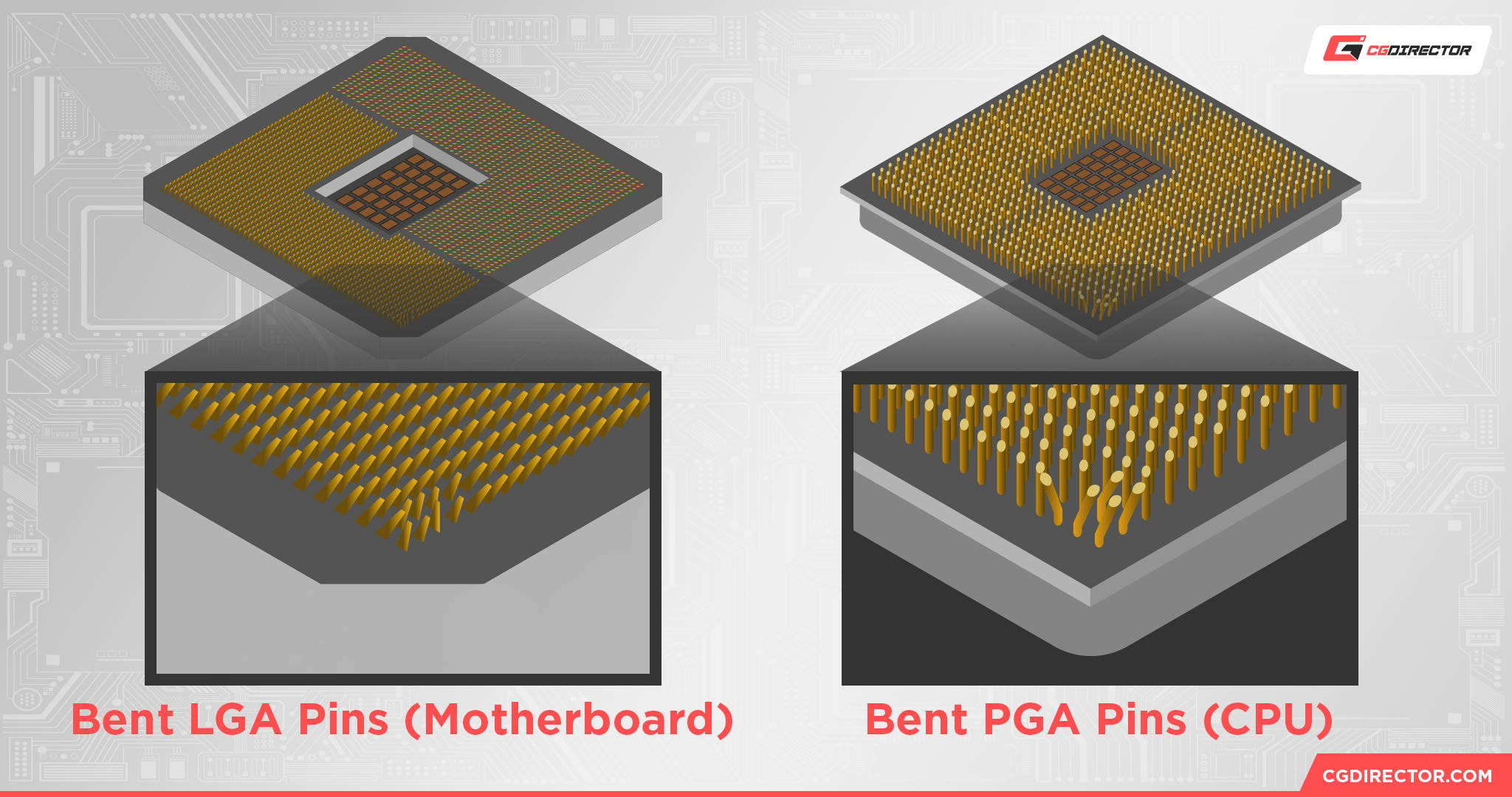![Learn how to Get a CPU Cooler off of a CPU [Un-stick Glued-On Cooler] Learn how to Get a CPU Cooler off of a CPU [Un-stick Glued-On Cooler]](https://www.cgdirector.com/wp-content/uploads/media/2024/03/How-to-get-CPU-Cooler-off-CPU-Twitter-copy.jpg)
A CPU cooler protects your CPU from thermal throttling, stability points, and heat-related injury.
Put merely: It’s a significant {hardware} part that unleashes your CPU’s full potential.
Nevertheless, there are occasions when you could must take away the CPU cooler, whether or not due to a troubleshooting step or upgrading the cooler itself.
In principle, this sounds like a easy process. You turn off your system, wriggle the cooler forwards and backwards, and gently pry it off. Viola.
However… what occurs when your CPU cooler is so decided to guard your CPU from hurt, that it refuses to come back off, irrespective of how a lot you pry and take a look at?
Thermal paste, the sticky substance that’s utilized between the CPU cooler and the processor, is the probably wrongdoer.
Its important job is to reduce the microscopic air gaps between the 2 surfaces — one thing which might considerably enhance thermal conductivity and preserve temperatures low. However in sure conditions, it may well trigger the CPU cooler and CPU to get caught or “glued” collectively.
On this article, we’ll share a number of strategies that’ll provide help to safely take away a caught CPU cooler. We’ll additionally delve a bit extra into what precisely thermal paste is and the right way to reapply it.
What Is the Function of Thermal Paste?
A Central Processing Unit (CPU) generates an entire load of warmth and might attain scorching temperatures (as much as 100 levels Celsius), particularly if it’s put below heavy load.
If this warmth is left unchecked, it may well result in thermal throttling and trigger your PC to stutter, decelerate, freeze, or shut down totally. It may possibly even end in everlasting {hardware} injury if continued for prolonged durations.
So, nothing enjoyable.
That’s the place a CPU cooler is available in (cue superhero music). It makes use of followers or a liquid coolant to maintain temperatures low, making certain your processor won’t ever attain the “hazard zone” and be put vulnerable to all of the dangerous stuff.
Nevertheless, for the CPU cooler to be efficient, it must be completely connected to the processor’s built-in warmth spreader (IHS) — one thing that’s not precisely possible due to the tiny, air-trapping imperfections that naturally happen on the IHS and CPU cooler plate surfaces.
Thermal paste is the substance that makes this good attachment potential. It spreads onto these surfaces and “plugs up” all their imperfections.

When correctly utilized, and with a high-quality cooler in place, CPU temperatures normally keep beneath 70 to 80 levels Celsius.
Why is My CPU Cooler Glued to the CPU?
Thermal paste begins as a gentle, greasy substance. Nevertheless, over time because the thermal paste is uncovered to quite a few heating/cooling cycles, it may well dry up and harden, leading to a “cement-like” grip that glues your CPU cooler to the CPU.
Most thermal pastes can final for a number of years earlier than they dry up and trigger noticeable points, however there are some cases the place it may well occur quite a bit earlier, together with:
- You’re utilizing a low-quality thermal paste
- The thermal paste wasn’t utilized correctly
- You used an previous thermal paste product that was poorly saved or previous its shelf life
- Extreme publicity to warmth (i.e. placing your PC below heavy load continuously)


A excessive CPU temperature is the primary crimson flag that the thermal paste is drying up and dropping its warmth switch effectivity. It will sometimes be adopted by efficiency points.
Dried-up thermal paste will even seem crumbly, onerous, and flaky in texture.
Learn how to Get a CPU Cooler Off of a CPU: A Shut Look
We’ll begin with the most secure and commonest strategies to get a CPU cooler off of a CPU.
As soon as we’ve lined the fundamentals, we’ll then introduce some much less “typical” strategies — these are typically secure so long as you’re extraordinarily cautious and assured round {hardware}.
As all the time, we suggest taking your PC to an professional in the event you’re not a hardware-savvy particular person.
1. Heat Up Your PC
You’ll first need to run your PC and make it good and toasty; warmth helps loosen and soften dried-up thermal paste, making the CPU cooler a lot simpler (and safer) to take away.
In gentle instances, you normally solely must run your PC for quarter-hour to generate sufficient warmth to heat the thermal paste. Nevertheless, don’t simply swap it on and go away it idle.
You might want to put your system below some type of load to ramp up these inner temperatures. Nice duties for this are gaming, 3D rendering, enhancing, or simply opening a zillion browser tabs.
As soon as you possibly can hear your followers whirring and battling the warmth, swap off your PC and take a look at eradicating the CPU cooler. If it’s nonetheless caught, repeat the method, however this time take the warmth up a notch by performing a stress take a look at in your CPU.
2. Carry out a Stress Take a look at
A stress take a look at is just about what it says within the title: It includes placing your PC below an especially heavy load to determine what its limits (or capabilities) are by way of efficiency.
Unsurprisingly, a stress take a look at additionally generates a excessive quantity of warmth — considerably greater than what you’d be capable of generate via your personal utilization.
Carry out the stress take a look at particularly in your CPU to hone in on the thermal paste.
There are many nice stress take a look at functions (aka benchmarking software program) on the market, however we personally suggest Cinebench. It’s free to obtain and the take a look at in your CPU will take round 10 to half-hour, relying on which choice you select.
As soon as the stress take a look at is full, swap off your PC and attempt to take away the CPU cooler once more.
Hopefully, the cussed thermal paste will now be gentle and pliable. However in the event you’re nonetheless struggling to take away the CPU cooler off of the CPU? You could simply be utilizing the flawed removing method.
3. Use the Twist n’ Elevate Approach
Eradicating the CPU cooler isn’t so simple as simply yanking it up till it releases from the thermal paste. Not solely will this in all probability not work, nevertheless it additionally dangers damaging your CPU and wrecking the pins.
There’s a particular method for loosening the seal the thermal paste has created — I prefer to name it the twist n’ carry technique — so that you’ll need to do this in the event you haven’t performed so already.
As its title suggests, the method requires you to gently twist the CPU cooler forwards and backwards to interrupt the seal.


You’ll really feel some slight resistance with every twist. As soon as the seal is damaged, it is best to be capable of simply carry the CPU cooler off of the CPU. Use gentle strain whereas lifting the cooler otherwise you danger pulling out the CPU from its socket.
In the event you’re nonetheless experiencing points, you possibly can wriggle it ever so barely to assist break the seal. Nevertheless, by no means pull up whereas doing this as it may well injury the {hardware}.
Do double-check that you just’ve additionally correctly launched the cooler’s locking mechanism earlier than trying to take away it.
For instance, in case your cooler has push pins, you normally want to show all of them counterclockwise, whereas in case your cooler has retention clips, you should first pull the cam lever to unlock it from the retention body after which launch the clips.
Consult with the producer’s guide in the event you’re undecided how your cooler’s locking mechanism works.
4. Use a Warmth Gun
CPU cooler nonetheless caught? Then strive utilizing a warmth gun or hair dryer to use exterior warmth onto the CPU cooler.
Sure, consider it or not, this does really work and it has helped many PC customers in the identical boat:
- Guarantee all the pieces is switched off from the facility and any cables are disconnected
- Set the warmth gun or hair dryer at low-to-medium warmth and maintain it a number of inches away from the CPU cooler
- Apply the warmth for a number of seconds, rotating across the CPU cooler. Then, examine if the thermal paste has loosened
- In the event you nonetheless can’t take away the cooler, repeat this course of a number of extra occasions
If heating the thermal paste immediately doesn’t work, you’ll subsequent need to swap out your hair dryer for some dental floss (yep, we’re being resourceful right this moment).
5. Pry with Dental Floss and Isopropyl Alcohol
Sure. Dental floss — or one other thread-like materials — is probably going going to be your savior if warmth isn’t working its typical magic.
That is particularly the case in the event you’ve managed to drag the CPU out of its socket and it’s now caught to the cooler (extra on this shortly).
The tactic includes rigorously sliding a chunk of floss in between the cooler plate and IHS to bodily break the thermal paste’s seal.
Right here’s the right way to go concerning the course of. Once more, guarantee all the pieces is switched off earlier than trying this:
- Dampen a cotton swab with a 90% isopropyl alcohol answer
- Gently dab it across the edges of the IHS, ensuring to not get it wherever else
- Rigorously slide a chunk of dental floss beneath, in between the cooler and CPU. You could must barely wriggle it forwards and backwards in the event you really feel some rigidity (however preserve to gentle strain)
- The adhesive bond will normally break as you slide the dental floss throughout, particularly while you hit the center. You could must work on it from every nook if it’s notably cussed
In the event you don’t have dental floss or sturdy thread readily available, you should use a enterprise card as an alternative.
This last technique ought to remedy the issue, however attain out to an expert for assist in case your CPU and the cooler stay glued collectively.
CPU Got here Out of Socket: Are Bent CPU Pins Salvageable?
Proper. We’re not right here to evaluate. In the event you’ve yanked out the CPU from its socket whereas attempting to swiftly take away the cooler, don’t panic simply but.
The CPU should still be okay; examine the socket in addition to the pins intently for bends or breaks. Use a magnifying glass to do that (except you could have Hawkeye-level eyesight).


If the CPU pins are bent, it doesn’t imply all hope is misplaced. You’ll be able to doubtlessly repair the pins by rigorously bending them again into place. Now we have tips about how to try this for each PGA and LGA pins right here.
Plus, even when some pins are damaged, your CPU may nonetheless be capable of run okay relying on which pins have damaged off.
For instance, if the damaged pin was only a reserved pin, your processor remains to be probably going to carry out solidly. But when your pin was devoted to a essential operate? Yeah. That doesn’t bode nicely. It’s luck of the draw actually.
As a aspect word, don’t be too onerous on your self. Some CPUs are infamous for having points with this, like older AMD Ryzen processors.
You’ll discover many complaints on-line about these processors from each newbie and skilled PC builders alike.
Reapplying Thermal Paste
Nice! You lastly freed your CPU cooler from the thermal paste’s grip. Sadly, your journey isn’t over but. You’ll now must reapply some contemporary thermal paste.
This time, be certain to use a high-quality paste that gained’t dry up right away. It’ll save your future self the difficulty of getting to undergo this traumatic course of over again.
You could find some CGDirector-approved thermal paste merchandise in our devoted purchaser’s information, so do have a browse earlier than splurging on the primary thermal paste you see in your native tech retailer.
Be certain that to contemplate your wants and {hardware} expertise too. There’s a entire vary of various kinds of thermal paste, every having its share of perks and cons.
Fortunately, reapplying thermal paste isn’t as nerve-racking as eradicating a caught CPU cooler. The method primarily includes making certain the CPU is safe in its socket, making use of a pea-sized quantity onto the IHS, after which rigorously putting the cooler on high.
Some CPU fashions like AMD’s giant Threadripper CPUs could require barely extra thermal paste, so do preserve that in thoughts.
You can even apply the thermal paste by putting tiny dots in every nook of the IHS and one other within the heart, however that’s a bit extra finicky than the nice ol’ blob technique.
Avid gamers Nexus has an amazing, in-depth video on the totally different strategies of making use of thermal paste (and the way environment friendly every one is):
When putting the CPU cooler onto the CPU, preserve it as flat as potential. You need the thermal paste to distribute evenly throughout the IHS floor, in any other case, it may well introduce air bubbles and also you’ll have to start out from scratch.
As a lot as we want to, we will’t present a step-by-step course of right here. Nevertheless, do take a look at suggestions for reapplying thermal paste in the event you’re new to the entire idea.
You also needs to familiarize your self with the correct method to retailer thermal paste to make sure it lasts.
FAQ
How usually does thermal paste must be reapplied?
Thermal paste sometimes lasts for 3 to 4 years earlier than it begins to degrade. Nevertheless, its actual lifespan can rely on the standard of the paste, your cooling system, and the way a lot put on you place your PC via.
It’s good apply to reapply the thermal paste each few years.
How do I clear thermal paste off my CPU?
You should utilize microfiber cloths and a 90% isopropyl alcohol answer to wash previous thermal paste off of your CPU.
Dip the material into the answer in order that it’s damp however not drenched, after which use this to softly clear away the previous thermal paste. Apply gentle strain if it’s notably caught. Then, clear away the remaining paste with a brand new microfiber material.
Don’t get the thermal paste wherever else on the motherboard in the course of the cleansing course of.
Additionally, you will want to present your CPU time to dry earlier than you possibly can reapply the thermal paste and fasten its cooler again on. Often, this can simply be a couple of minutes since alcohol evaporates quick.
Is it okay to run a CPU with out thermal paste?
No, it is best to by no means run a CPU with out thermal paste.
Whereas your system will run, there’s an extremely excessive danger of it throttling, and fixed publicity to excessive temperatures can shorten the lifespan of your CPU.
You’ll want so as to add thermal paste as quickly as potential in the event you haven’t already performed so. Nevertheless, do word that in case your PC was prebuilt, it probably already has thermal paste on the CPU, even when it wasn’t explicitly specified within the product data.
We do suggest reapplying the thermal paste as quickly as you possibly can although; many producers of prebuilt PCs go for low-cost paste which doesn’t are inclined to final lengthy.
Over to You
Whereas a CPU cooler that’s caught to a CPU will be nerve-racking, normally, there are methods to ease it off safely. Warmth will all the time be your greatest pal, so be certain to make use of benchmarking software program like Cinebench to get your PC toasty earlier than trying the removing.
If the cooler nonetheless isn’t budging regardless of all the warmth, then your greatest guess is to pry it off with dental floss or a enterprise card.
We hope our information has helped, however bear in mind to seek the advice of your producer for additional recommendation and tech help. Alternatively, you possibly can attain out to our specialists on the discussion board or go away us a remark down beneath. We’re all the time round to assist!






